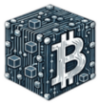Blockchain software is the backbone of decentralized digital ecosystems, revolutionizing how data is managed and shared across industries. At its core, it operates on distributed ledger technology (DLT), ensuring secure, transparent, and tamper-proof data storage. Unlike centralized systems, blockchain relies on cryptographic protocols and consensus mechanisms to validate and record transactions across a network of nodes. This eliminates the need for intermediaries, making processes more efficient and trustworthy.
Key Features of Blockchain Software
Blockchain software stands out for its unique features, which make it indispensable for various industries:
- Decentralization: Unlike traditional centralized systems, blockchain spreads data across a network of participants (nodes). This architecture reduces the risk of single points of failure, enhancing system resilience.
- Immutability: Once information is recorded on a blockchain, it cannot be altered or deleted. This ensures transparency and builds trust among users and stakeholders.
- Smart Contracts: These are self-executing contracts embedded in the blockchain. They automatically perform actions (e.g., transferring funds) when predefined conditions are met, eliminating the need for manual intervention.
- Tokenization: Blockchain tokenization software transforms physical or digital assets into digital tokens, allowing fractional ownership, easy transfers, and improved liquidity.
- Interoperability: Modern blockchain solutions can connect with other blockchains and legacy systems, ensuring seamless data sharing and integration.
Blockchain Technology in Software Development
Blockchain technology has reshaped the software landscape, offering tools and frameworks that cater to various use cases:
- Blockchain Frameworks: Platforms like Ethereum, Hyperledger, and Binance Smart Chain provide the infrastructure for creating decentralized applications (dApps) and smart contracts.
- Cryptocurrency Wallets: These digital wallets are essential for storing, sending, and receiving cryptocurrencies and tokens.
- Development Tools: Software development kits (SDKs), APIs, and IDEs streamline blockchain application development. Examples include Truffle Suite for Ethereum and IBM Blockchain Platform.
- Blockchain Explorers: Tools like Etherscan enable users to track transactions, analyze block data, and verify wallet balances.
- Node Software: Running a node is critical for participating in a blockchain network, contributing to its validation and operation.
These tools work together to build and maintain the blockchain ecosystem, empowering developers and businesses to create innovative solutions.
Difference Between Visa and Blockchain Software
Visa and blockchain software serve distinct purposes, with contrasting architectures and use cases. Visa operates on a centralized system, leveraging proprietary technology to process millions of transactions per second. Its centralized nature ensures high-speed performance but limits transparency and user control. Blockchain software, on the other hand, prioritizes decentralization and security. Transactions are validated by consensus mechanisms, ensuring data integrity and reducing the reliance on a central authority.
| Feature | Visa | Blockchain Software |
| Control | Centralized | Decentralized |
| Scalability | High | Medium to High (varies) |
| Transparency | Limited | Full |
| Security | Strong but Centralized | Cryptographically Secure |
| Intermediaries | Required | Eliminated |
While Visa remains the go-to solution for fast and reliable transactions, blockchain software is emerging as the preferred choice for industries that require enhanced transparency, security, and decentralization, such as finance, healthcare, and supply chain management.
Innovations in Blockchain Technology
Blockchain software companies are at the forefront of innovation, introducing groundbreaking solutions across multiple industries. Firms like ConsenSys and IBM are driving the adoption of blockchain by focusing on scalability, privacy, and interoperability. For instance, ConsenSys is leveraging Ethereum to build decentralized finance (DeFi) applications, while IBM uses Hyperledger to streamline supply chain management and healthcare data exchange.
Tokenization is one of the most transformative aspects of blockchain innovation. By converting real-world assets into digital tokens, blockchain simplifies complex processes such as asset trading, crowdfunding, and rights management. Additionally, advancements in cross-chain solutions allow data and assets to flow seamlessly between different blockchain networks, addressing scalability and compatibility challenges.
With its ability to adapt and evolve, blockchain software is paving the way for a more secure and efficient digital future, reshaping industries and creating opportunities that were previously unimaginable.



